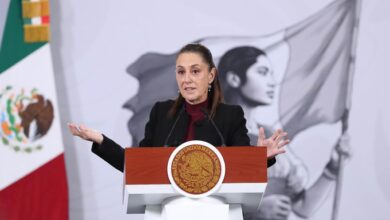Why does European soccer dominate FIFA World Cups and leave America behind?
Listen to this article
The Conmebol, once winner of the senior and youth categories with their national teams, has seen how the old continent has won the last World Cups

South American soccer is in one of the worst moments of its history, because, in terms of numbers, the Conmebol has given Europe the title of the best soccer in the world. The South American teams knew for decades how to cover the economic and infrastructure deficiencies with a spectacular soccer that gave them good results; the five titles of Brazil in the World Cup are a clear example. The 21st century has been different, Europe has taken everything in the last four editions in senior teams and U-20, something that does not go unnoticed for the world.
Leer en español: ¿Por qué el fútbol europeo domina los Mundiales FIFA y deja a América estancada?
The end of an era?
In 2002, Brazil was champion in Korea-Japan, still in the era of Roberto Carlos, Rivaldo and Ronaldo. A year later, the country lifted the trophy of U-17 champions in Finland. From there, a terrible record in senior category started for Conmebol's national teams. In Qatar 2022, it will be 20 years of that pennant and it has not won again. Meanwhile, on the other side of the ocean, Italy (Germany 2006), Spain (South Africa 2010), Germany (Brazil 2014) and France (Russia 2018) were crowned in the following World Cups.
In 2006, South America did not even reach the semifinals, it was all for the Europeans who took the title in the hands of Italy. 2010 offered a 'neutral' headquarters that Spain finally took advantage of to obtain its first star; on that occasion, only a solid Uruguay managed to enter the semifinals.
In 2014, the tournament returned to South America, but it was a real sporting disaster for the Conmebol, as the five-time world champion and Lionel Messi's Argentina ended up humiliated by Germany, a worthy champion. The cherry on the cake was Russia 2018, where the South Americans were again out of the semifinals, which gave way to the second French title.
The New York Times highlights this fact. On five occasions, the four best teams of a world cup have been European: 1934, 1966, 1982, 2006 and 2018, all played on European soil. On South America's side, this phenomenon has never occurred in which the four best are from the Conmebol, although it must also be said that they are disadvantaged in number of participants: 5 or 6 come from the Conmebol, while in Europe there are 13.
What happened to the U-20?
In Poland 2019, the first Ukrainian title in this category has just been sealed. FIFA highlights the achievement of the Europeans with a 3-1 over the Koreans. With this result, four consecutive tournaments with UEFA champions are added: France (2013), Serbia (2015), England (2017) and Ukraine (2019). For Conmebol, there have been three subchampionships and a third place in 2019 achieved by Ecuador. The last title in U-20 is from Brazil and was achieved in 2011.
You can also read: These are the favorites to win the 2019 Ballon d'Or
Why the European domain
The European domain extends from the World Cup, U-20 and U-17 to the World Cup. The correct thing would be to ask what Europe is doing well to achieve and sustain its dominance over Conmebol. UEFA has three of the most successful tournaments in the world: the UEFA League, the Champions League and the European Championship. Its success is not only economic, but also sporty. That is largely due to soccer in South America from where it imports a lot of its stars, such as Lionel Messi, who in his senior team has added more failures than successes.
The New York Times highlights that Argentina, Uruguay and Brazil are the three largest exporters of soccer players, while Europe is one of its biggest markets and the reason why the leagues of these countries can not keep their biggest promises, since they are looking to migrate to Europe or, in other cases, to the leagues of Mexico and the United States. In short, much of the level of European soccer is held by South American players.
The American newspaper mentions one of the biggest problems of Conmebol: corruption. The leadership of South American soccer has been tainted by corruption cases. Only in Brazil, the names of José Maria Marin, Marco Polo del Nero, João Havelange and Ricardo Teixeira, all with accusations of corruption and money laundering, stand out. The cases of Julio Grondona in Argentina and Eugenio Figueredo in Uruguay are no less scandalous.
Brazil and Argentina have historically been the largest economies in South America and simultaneously soccer powers. What happens in these countries affects the dynamics of the subcontinent, since they are big suppliers and clubs have become suppliers of talent to Europe, North America and now Asia.
The management of the federations and the national teams is less efficient, not a few times Messi has been designated as someone with the power to veto or approve managers and teammates. Roberto Ayala, of the Argentinian national team's management body, told El Pais that the era of designing teams for Messi has ended.
The Conmebol has made noticeable changes, adjusting their calendars with Europe and changing the two-matches finals as in UEFA. Their plans have modified television rights to seek the highest returns in their history; even in the leadership, the main faces have changed. Looking more like Europe is the bet of South America; 2022 and 2026 will be the test of whether the plan works or not.
LatinAmerican Post | Luis Ángel Hernandez
Translated from "¿Por qué el fútbol europeo domina los Mundiales FIFA y deja a América estancada?





